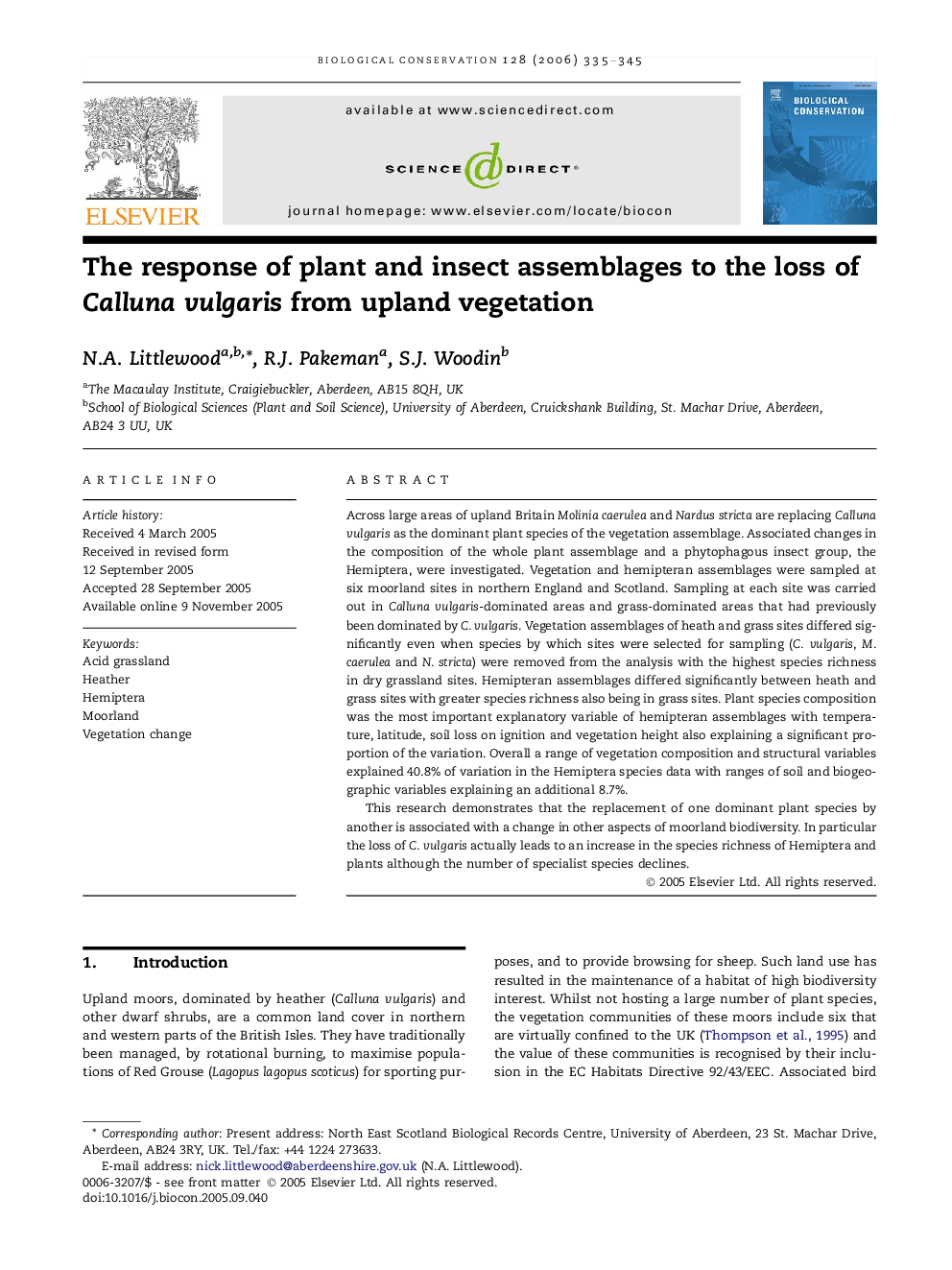| کد مقاله | کد نشریه | سال انتشار | مقاله انگلیسی | نسخه تمام متن |
|---|---|---|---|---|
| 4387855 | 1304631 | 2006 | 11 صفحه PDF | دانلود رایگان |

Across large areas of upland Britain Molinia caerulea and Nardus stricta are replacing Calluna vulgaris as the dominant plant species of the vegetation assemblage. Associated changes in the composition of the whole plant assemblage and a phytophagous insect group, the Hemiptera, were investigated. Vegetation and hemipteran assemblages were sampled at six moorland sites in northern England and Scotland. Sampling at each site was carried out in Calluna vulgaris-dominated areas and grass-dominated areas that had previously been dominated by C. vulgaris. Vegetation assemblages of heath and grass sites differed significantly even when species by which sites were selected for sampling (C. vulgaris, M. caerulea and N. stricta) were removed from the analysis with the highest species richness in dry grassland sites. Hemipteran assemblages differed significantly between heath and grass sites with greater species richness also being in grass sites. Plant species composition was the most important explanatory variable of hemipteran assemblages with temperature, latitude, soil loss on ignition and vegetation height also explaining a significant proportion of the variation. Overall a range of vegetation composition and structural variables explained 40.8% of variation in the Hemiptera species data with ranges of soil and biogeographic variables explaining an additional 8.7%.This research demonstrates that the replacement of one dominant plant species by another is associated with a change in other aspects of moorland biodiversity. In particular the loss of C. vulgaris actually leads to an increase in the species richness of Hemiptera and plants although the number of specialist species declines.
Journal: Biological Conservation - Volume 128, Issue 3, March 2006, Pages 335–345